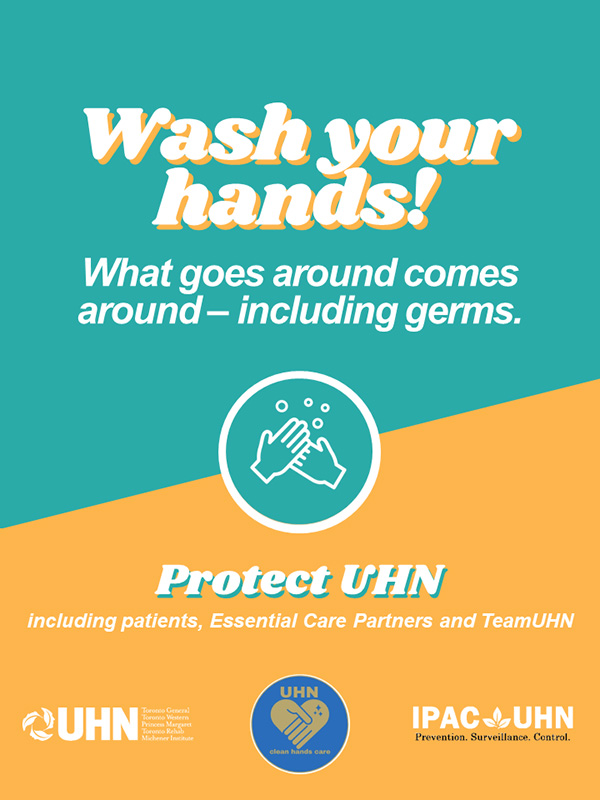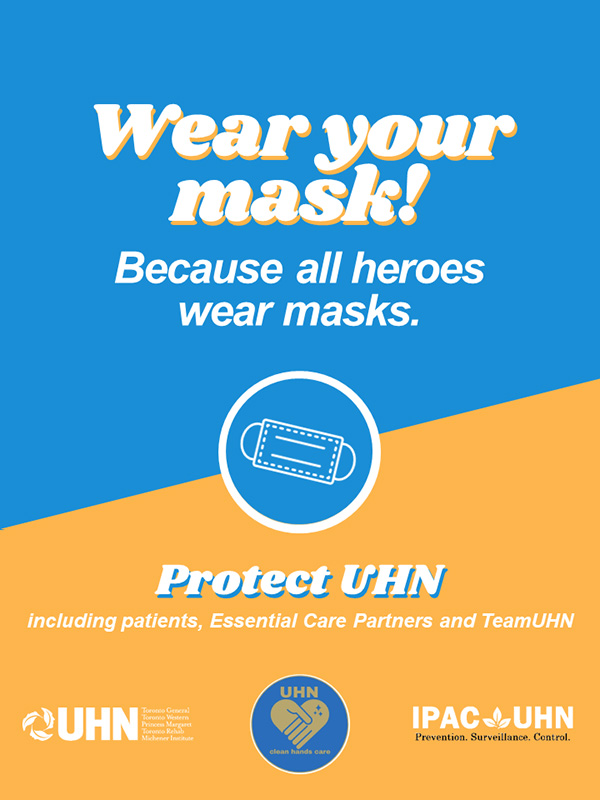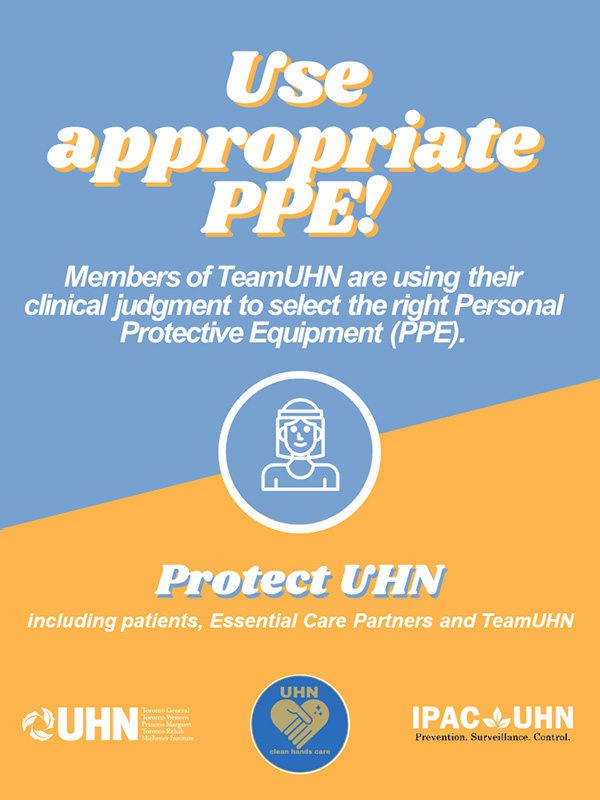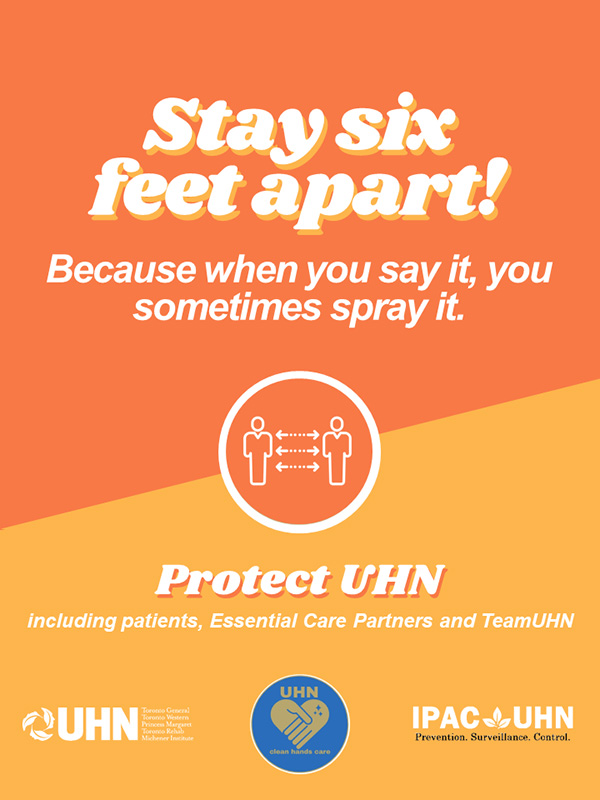To many, they are the infection prevention and control specialists who have helped keep us safe during the pandemic. At home, they are more affectionately known as "Mom."
Like so many parents, Dr. Susy Hota, Medical Director of Infection Prevention and Control at UHN, and Carly Rebelo, Manager of Infection Prevention and Control at UHN, are navigating back-to-school plans and discussing best practices to protect their children and family.
Here's a look at how each of them is handling some key challenges.
How are you implementing mask use with your children?
Carly: We have been practising – a lot. Both putting on and taking off my son's mask. It does make me nervous, because he is only six years old. I've tried to find the best mask that works for him, but I am hoping there is no trading at school – especially with the fun ones. It will be trial and error, and every child is different. For children who wear glasses, I recommend a tight nose clip so the mask hugs the nose and sits close to the face.
Susy: What worries me the most is that children touch their masks and their faces often. We are reminding our daughters not to do that, or to wash their hands if they do. The other big issue is losing the masks. One way to help is to implement a system of having masks be a part of their daily routine so that every day you wake up and grab a fresh mask, and after school you bring it home and put it in the laundry.
Can you explain the importance of wearing a mask at school (for older students)?
Susy: Masks are most important as a source of control. If you are infected with COVID-19 and do not yet know it, it would protect others around you from getting exposed. This is especially important given the knowledge that children can be minimally symptomatic or asymptomatic with COVID-19 infection. It is also important because people can transmit infection in the two or three days prior to developing symptoms. Medical masks, and to a lesser degree, cloth masks, are also able to reduce the risk of infection to the individuals wearing the mask. Masks provide a barrier to droplets or splash and also have some ability to filter particles for this purpose.


If a student in my child's class is COVID-19 positive, am I considered a close contact?
Susy: No, the parent of the exposed child would not be considered a close contact, as long as their child remains symptom-free and/or tests negative. The exposed child needs to isolate for 14 days, but the parent of the exposed child does not need to isolate unless their child tests positive for COVID-19 during this time. Public Health will provide advice in terms of who isolates and who needs to be tested.
If my child has COVID symptoms – does he or she
need to be tested?
Carly: Likely, yes. All symptomatic children in school should stay home and be tested immediately; but expectations will be communicated by Public Health.
If children can't practice social distancing due to space constraints, what is an alternative strategy?
Susy: Where physical distancing is possible, it should be maintained. But, we know that kids won't always be able to distance well throughout the school day. It's not an all-or-nothing situation. Multiple, complementary measures must be in place for risk mitigation to be effective. We don't need to be "perfect" at any one measure to be successful overall.
Minimizing the number of people children are exposed to within their school bubble is an alternative, "next best" option. We call this cohorting. Have the same children (and teachers/staff) stick together as much as possible throughout the school day.
Are you sending your children back to school? If so, what advice will you be giving them?
Carly: For me, it was an easy decision to send my son back to school. Weighing mental health against the potential risks, I realized he really needed to get back to his social circles and interact with other children. The number one advice is to listen to his teachers because things will look different from what they remember. Tell your teacher immediately if you start to feel sick at school. Wear your mask while indoors, in the classroom, which is something we are practising now.
Susy: My children have been in a school-based day camp since it opened, which has helped with the transition back to school. They see how things have changed since they left in March. We keep reinforcing mask use, and even though they are five and eight years old, and it is not mandatory for them, they will wear masks at school (or at least try their very best!).
What would be a good routine for children to follow after they come home from school?
Susy: As we head into fall, children should remove their jackets and shoes at the door. They should then proceed to thoroughly wash their hands and toss used masks in the laundry hamper. After handling their used masks, they need to wash their hands again. I don't see the need to do much more beyond this in most households. Changing clothes after school is probably not necessary. There is little evidence that viable virus will last long on the clothes or result in transmission to others. If families have immunocompromised, elderly or those with chronic health conditions in the home, they may want to take this extra step. I also don't get too worried about books, backpacks and their contamination risk. I would emphasize the importance of cleaning hands after handling these items over sanitizing them.


How do you overcome the fear and uncertainty?
Susy: It is all about the decisions we make. To me, it is prioritizing what is important. There are no zero risk scenarios in this pandemic. People have to come to terms with living with some level of risk, and you just have to do the best you can to reduce that risk. COVID-19 is here to stay for quite some time, and we have to learn to accept it.
Carly: In terms of being around other children, we all just have to accept that there is going to be this change and while we are supposed to be reducing the size of our social bubbles, this is going to be a trade-off that we have to make. Everything else becomes important to supplement that. The honour system will be incredibly important. Families will need to trust one another that they are doing their symptom checks and taking the necessary steps.
With cold and flu season coming, how can parents decipher between those and COVID-19?
Susy: While we expect that some of the measures we have in place to prevent COVID-19 such as hand washing, masking, and social distancing, will minimize the cases of other respiratory viruses, it probably won't eliminate them. It is hard to differentiate between respiratory viruses and COVID-19 based on symptoms alone, and they have hugely different implications. Testing will be important, especially early on. Public Health will be the people to provide testing recommendations in schools and we should listen to this advice carefully.
Also, we should think about what can be done to minimize the impact of other respiratory viruses beyond masking and social distancing. It is incredibly important to get your influenza vaccine this year. Also, if you become sick with symptoms of a respiratory infection, don't go to work. We are all concerned about what is coming, so why wouldn't we want to do all we can to prevent all respiratory infections? It's not flu vs. COVID-19, it's us vs. the viruses!
